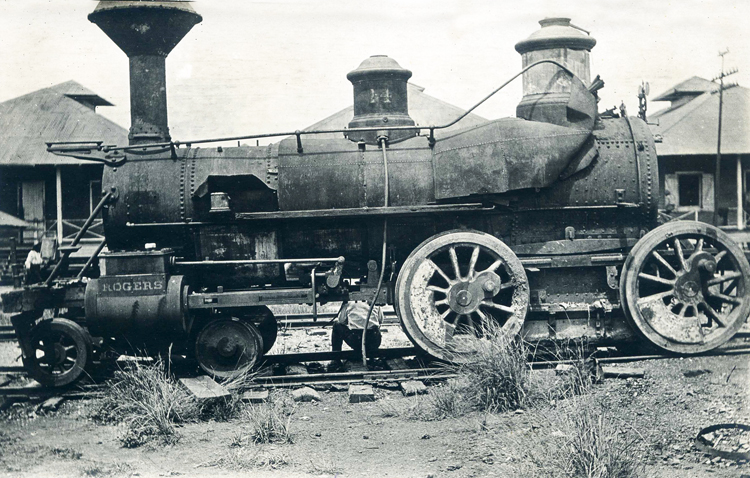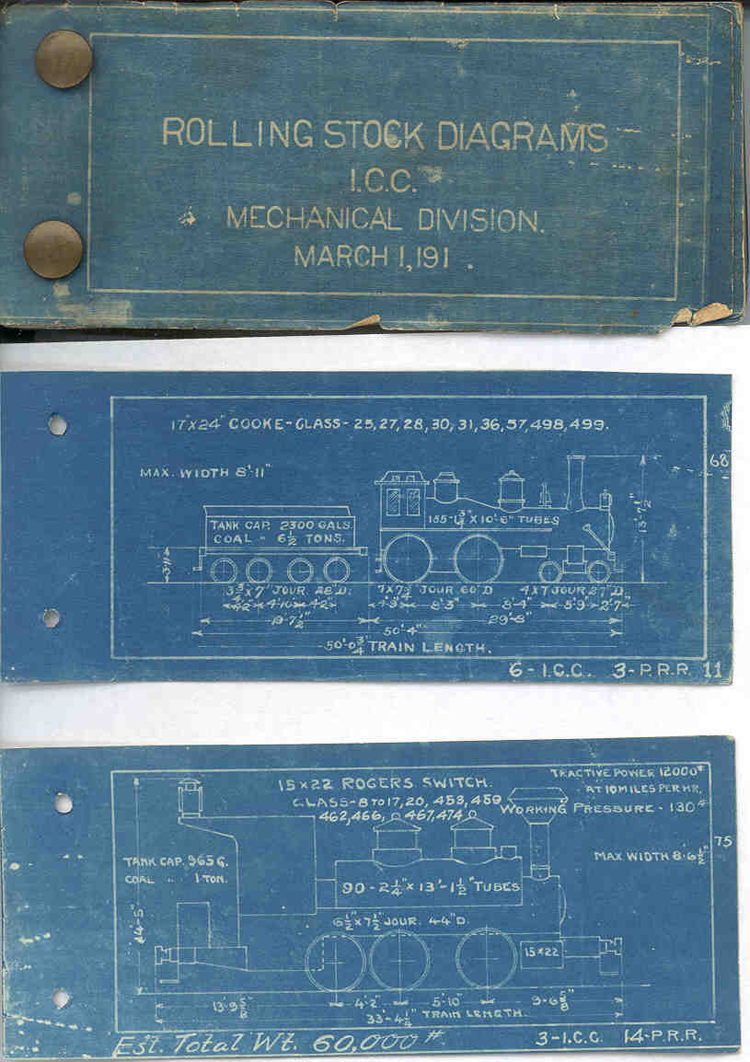 |
Photo of the Week
January 13, 2013
 |
|
Continuing once again with the Ralph Sartor collection. This week and the next few weeks, I am going to show some old locomotive photos. This week is a photo of an old Rogers steam locomotive that was used by the Panama Railroad prior to the American Construction in Panama. This old locomotive has seen better days. Rogers was a big company in it's day producing some of the United States early locomotives. The caption on the bakc of the photo says, "Old Panama R.R. Locomotive". I have researched to see if I could date this particular locomotive, but came up with nothing. The number on the boiler looks to be number 14. In the book Diagrams and Photographs of Railroad Equipment Used to Construct th Panama Canal - 1881 - 1914, there is mention of a Rogers Locomotive - P.R.R. Class 8 to 17 & 20 locomotive, but doesn't resemble this particular locomotive in the book's illustration. Note the guy underneath the locomotive getting some shade. By the looks of the buildings in the background, I think this locomotive is sitting on track near the Cristobal Round House and the houses are that of Camp Bierd (Silver Quarters). See the narration below from the Paterson Great Falls web site for a history of Rogers: Paterson, New Jersey was the home of five steam locomotive manufacturers. The largest of these was the Rogers Locomotive Works. In 1832, Thomas Rogers became the head of a new firm known as Rogers, Ketchum and Grosvenor which made cotton textile looms and machinery. Rogers became interested in locomotives and with his extensive machinery experience, he studied and dismantled an English locomotive purchased by the Paterson and Hudson River Railroad. In 1835, after making extensive drawings, the firm announced plans to manufacture its own locomotives. This was a daring step because Rogers venture had to overcome the twin problems of a young American technology and heavy competition from established British manufacturers. The first Rogers locomotive, the Sandusky, took sixteen months to complete and on October 6, 1837 made its first trip from Paterson to Jersey City and New Brunswick and back. Rogers locomotive production rose from 1 in 1837 to 103 in 1854. By then Rogers had become America's leading locomotive company, maintaining this position for nearly ten years. After Thomas Rogers' death in 1856, the firm name was changed to the Rogers Locomotive and Machine Works with Thomas' son, Jacob A. Rogers as President. William A. Hudson was appointed Chief Engineer and Superintendent of the Works and he continued to improve the Rogers designs during the Civil War when the demand for locomotives dramatically increased. The two most famous Civil War locomotives, the 1855 Rogers General and the 1856 Danforth, Cooke Texas (which opposed each other in the great railroad chase), were both manufactured in Paterson. Until his death in 1881, Hudson continued the
innovative locomotive engineering and manufacturing that became a
trademark of Rogers locomotive and Machine Company. By then, a new
Rogers locomotive was produced every second work day and many were
shipped throughout the world. Post publication comments from CZImages contributor Andrew Fraser: "I was viewing your Picture of The Week today and it prompted me to dig into my archives of which I have an original copy of Rolling Stock Diagrams ICC. I think what you have is a photo of a Cooke Class locomotive. From the looks of it, it's been in a wreck (bent up pipe and boiler shroud) and it's also been canibalized as the cab is missing as well as the drive wheel links have been removed. How it got the name Rogers on the main piston housing I don't know but comparing the diagrams (copy attached) with the picture, I don't think you have a Rogers switch engine though according to the diagrams if the number on the dome is actually 14, the Rogers switch engines owned by the ICC did include class numbers between numbers 8 to 17 (see diagram of the Rogers switch engine). An interesting point of the diagrams, is at the lower-left of the diagrams it list the quantities of the engines run by the ICC and the quantity run by the PRR. Let me know if any of this info has been of help in your research."
|
 |
Home|
Photo
of the Week | Photo
Archives | Main
Show Room | Photo
Room | Military
History
PC
History | Sign
Guest Book | Read
Guest Book | Search
CZ Images | CZ
Web Searcher
Gift
Shop | Links
